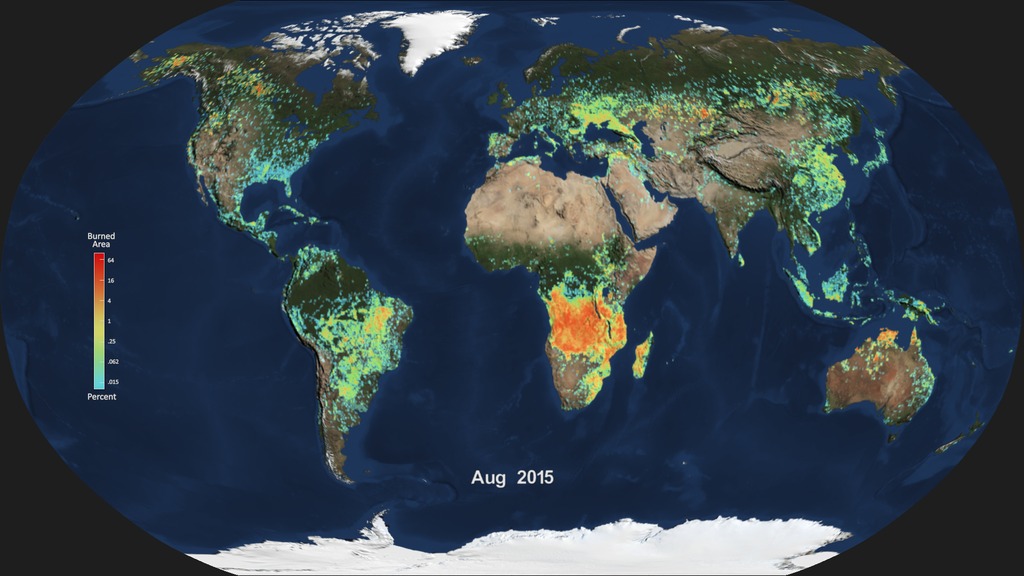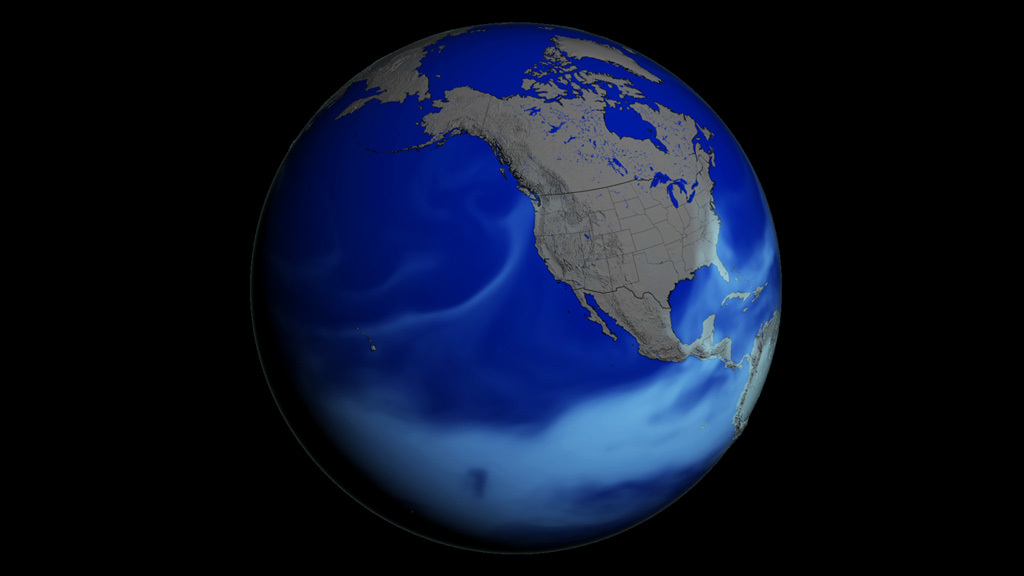AGU El Nino Press Conference Release Materials
Forty percent of California's annual water supply comes in the form of atmospheric rivers, tendrils of moisture that travel from the Pacific Ocean and rain out when they move over the coast. New research on how El Niño affects atmospheric rivers headed for the California coast suggest that while the number of atmospheric rivers California receives (typically ten per year) will not change during an El Niño, they will be stronger, warmer, and thus wetter.
Data visualization of California landfalling atmospheric rivers during winter 1997/1998. Clouds, precipitation and water vapor layers are from the NASA MERRA dataset.
Data visualization of California landfalling atmospheric rivers during winter 2014/2015 (global perspective).
Data visualization of California landfalling atmospheric rivers during winter 2014/2015.

Precipitation rate color bar for the atmospheric rivers visualizatons.
Monthly burned area from the Global Fire Emissions Database (GFED)
This time series was created using data from the Moderate Resolution Imaging Spectrometer (MODIS) onboard NASA’s Terra and Aqua satellites. Burned area is estimated by applying an algorithm that detects rapid changes in visible and infrared surface reflectance imagery. Fires typically darken the surface in the visible part of the electromagnetic spectrum, and brighten the surface in several wavelength bands in the shortwave infrared that are sensitive to the surface water content of vegetation. Thermal emissions from actively burning fires also are measured by MODIS and are used to improve the burned area estimates in croplands and other areas where the fire sizes are relatively small. This animation portrays burned area between September 2000 and August 2015 as a percent of the ¼ degree grid cell that was burned each month. The values on the color bar are on a log scale, so the regions shown in blue and green shades indicate small burned areas while those in red and orange represent a larger percent of the region burned. Beneath the burned area, the seasonal Blue Marble landcover shows the advance and retreat of snow in the northern hemisphere.
Credits
Please give credit for this item to:
NASA's Goddard Space Flight Center
-
Animators
- Horace Mitchell (NASA/GSFC)
- Greg Shirah (NASA/GSFC)
- Cheng Zhang (USRA)
- Cindy Starr (Global Science and Technology, Inc.)
-
Producer
- Kayvon Sharghi (USRA)
-
Writer
- Ellen T. Gray (ADNET Systems, Inc.)
-
Scientists
- Jim Randerson (University of California, Irvine)
- Yang Chen (University of California, Irvine)
- Doug C. Morton (NASA/GSFC)
- Duane Waliser (NASA/JPL CalTech)
- Bin Guan (NASA/JPL CalTech)
Release date
This page was originally published on Tuesday, December 15, 2015.
This page was last updated on Wednesday, May 3, 2023 at 1:49 PM EDT.

